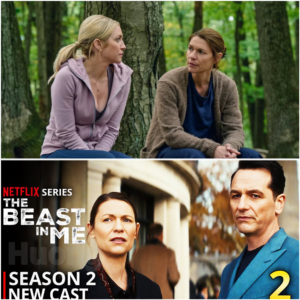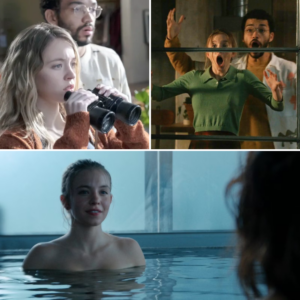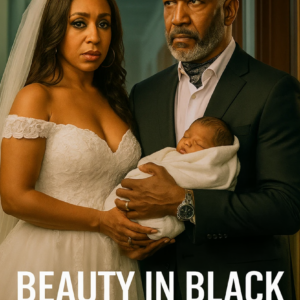Keanu Reeves has long been a titan of action cinema, delivering iconic performances in films like The Matrix, Speed, and Point Break. But it’s his role as the titular assassin in John Wick (2014), a film that grossed $86 million worldwide, that redefined the genre and cemented his status as a modern action legend. Directed by Chad Stahelski and David Leitch, John Wick is a stylish, relentless revenge thriller that follows a retired hitman drawn back into the criminal underworld after a personal tragedy. The film’s depiction of the Russian mafia, particularly the Tarasov crime family, has been praised for its authenticity, with former CIA agent and Russian mafia expert Joe Serio commending its accuracy in capturing the culture and operations of organized crime. However, Serio also points out one key myth that John Wick perpetuates. This article delves into the film’s portrayal of the Russian mafia, its strengths, the one inaccuracy called out by an expert, and why John Wick remains a benchmark for action filmmaking.
The John Wick Phenomenon
Released in 2014, John Wick was a sleeper hit that revitalized Keanu Reeves’ career and launched a billion-dollar franchise. With a budget of just $20-30 million, the film grossed $86 million globally, driven by its lean narrative, breathtaking action, and Reeves’ magnetic performance. The story follows John Wick, a legendary assassin known as the “Baba Yaga,” who retires after the death of his wife, only to be pulled back into the underworld when Russian mobster Iosef Tarasov (Alfie Allen) steals his car and kills his puppy—a final gift from his late wife. What ensues is a meticulously choreographed rampage through New York’s criminal underbelly, with Wick taking on the Tarasov family, led by patriarch Viggo (Michael Nyqvist).
The film’s success lies in its simplicity and execution. Directors Stahelski and Leitch, both former stuntmen, crafted action sequences that blended gunplay, martial arts, and tactical precision—coining the term “gun-fu.” Reeves’ commitment to the role, including months of training in judo, jiu-jitsu, and firearms, lent authenticity to every fight. The film’s world-building, with its shadowy Continental hotel and gold-coin economy, created a mythic backdrop that felt both fresh and nostalgic, evoking ‘90s action classics while pushing the genre forward.
Central to John Wick’s narrative is the Russian mafia, specifically the Tarasov family, whose operations and culture are depicted with striking detail. Joe Serio, a former CIA agent who worked in Moscow’s Organized Crime Control Department and later with Kroll Associates, has praised the film for getting many aspects of the Russian mafia right. Having lived in Russia for nearly a decade and authored books like Investigating the Russian Mafia, Serio’s expertise makes his analysis particularly compelling. Let’s explore what John Wick nails about the Russian mafia and the one myth it gets wrong.
Nailing the Russian Mafia’s Culture and Operations
John Wick’s portrayal of the Russian mafia is rooted in a deep understanding of its structure, culture, and ethos. According to Serio, the film captures several key elements accurately, reflecting the real-world dynamics of Russian organized crime, particularly the Bratva (Brotherhood) groups that emerged from Soviet prisons.
1. Hierarchical Structure and Loyalty
The Tarasov family in John Wick operates with a clear hierarchy, with Viggo Tarasov as the authoritative patriarch and Iosef as his reckless son. This mirrors the real-world structure of Russian mafia groups, which are often organized like corporations, with a boss (pakhan) at the top, lieutenants overseeing operations, and foot soldiers carrying out tasks. Serio notes that John Wick accurately depicts the loyalty and fear that bind these organizations, as seen in Viggo’s willingness to protect Iosef despite his mistakes, and the deference shown by henchmen like Avi (Dean Winters). This dynamic reflects the Bratva’s emphasis on loyalty, where betraying the group can result in severe consequences.
2. The Role of Tattoos
One of the film’s most striking visual elements is its use of tattoos to signify mafia affiliation. Viggo’s men, including Iosef, sport intricate tattoos that mark their status and allegiance. Serio, who has studied the significance of tattoos in Russian organized crime, praises this detail, noting that tattoos are a hallmark of the Bratva, often earned in prison and serving as a visual resume of a member’s rank and criminal history. For example, a star tattoo on the shoulder can denote a high-ranking “thief-in-law” (vor v zakone). John Wick’s attention to this cultural marker adds authenticity, grounding its stylized world in reality.
3. The Global Reach of the Russian Mafia
John Wick portrays the Tarasov family as a powerful entity with influence in New York’s underworld, a detail that aligns with the global reach of Russian organized crime. Serio, who investigated figures like Semion Mogilevich, one of the world’s most notorious mob bosses, confirms that Russian mafia groups operate internationally, engaging in activities like money laundering, arms trafficking, and extortion. The film’s depiction of the Tarasovs controlling nightclubs and other fronts mirrors real-world operations, where legitimate businesses serve as cover for illicit activities.
4. The Role of Hitmen
The film’s central premise—John Wick as a legendary hitman—also aligns with reality, according to Serio. Russian mafia groups frequently employ skilled operatives for targeted killings, often outsourcing to professionals like Wick to maintain deniability. The film’s depiction of Wick as a feared figure with a reputation for precision reflects the real-world role of contract killers, who are often ex-military or trained in specialized skills. Serio highlights that John Wick captures the mystique surrounding these figures, who operate in the shadows but command respect and fear.
5. The Common Fund
Another accurate detail is the concept of the “common fund” (obshchak), a shared pool of money used by mafia groups to finance operations, bribe officials, or support imprisoned members. In John Wick, the Tarasovs’ wealth and resources suggest such a fund, which Serio notes is a critical component of Russian organized crime. This financial structure allows groups to maintain power and loyalty, even under pressure from law enforcement.
The One Myth: The Invincibility of the Hitman
Despite its strengths, John Wick perpetuates one significant myth about the Russian mafia, according to Serio: the invincibility of the hitman. The film portrays John Wick as a near-mythical figure, capable of single-handedly taking down dozens of armed men with superhuman precision and resilience. While this makes for thrilling cinema, Serio argues that it exaggerates the capabilities of real-world hitmen. In reality, contract killers, while skilled, are not invincible. They face the same risks as any operative—mistakes, betrayal, or law enforcement intervention can lead to their downfall. Serio points out that the Russian mafia values efficiency and discretion, and a hitman as conspicuous as Wick, leaving a trail of bodies, would likely be eliminated to avoid attracting attention.
This myth serves the film’s narrative, amplifying Wick’s legend as the “Baba Yaga.” It also aligns with action movie tropes, where the protagonist must overcome overwhelming odds. However, Serio notes that real hitmen operate with more caution, often working in teams and avoiding high-profile massacres. The film’s exaggeration of Wick’s invincibility, while cinematically effective, diverges from the pragmatic reality of mafia operations.
Why John Wick’s Portrayal Matters
The accuracy of John Wick’s depiction of the Russian mafia enhances its immersive quality, making its world feel lived-in and believable. By grounding the Tarasov family in real-world details—tattoos, hierarchy, and global influence—the film creates a credible backdrop for its heightened action. This authenticity, combined with its stylized violence, sets John Wick apart from other action films that rely on generic villain archetypes. The Tarasovs feel like a specific, tangible threat, not a faceless organization, which heightens the stakes of Wick’s revenge.
Serio’s insights, drawn from his time in Moscow and his work with Kroll Associates, underscore the film’s commitment to detail. His praise for John Wick—shared in a Business Insider video analyzing Russian mob scenes—highlights its rare ability to balance realism with entertainment. While the invincibility myth is a creative liberty, it serves the film’s goal of crafting a larger-than-life hero, making Wick’s journey both emotionally resonant and visually spectacular.
The Cinematic Brilliance of John Wick
Beyond its mafia portrayal, John Wick is a masterclass in action filmmaking. The film’s success hinges on several key elements:
1. Keanu Reeves’ Performance
Reeves delivers a career-defining performance as John Wick, blending stoic grief with lethal intensity. His physicality—honed through months of training—makes every fight scene feel authentic, while his understated delivery conveys the pain driving Wick’s rampage. Reeves’ ability to make Wick both relatable and mythic is a testament to his enduring appeal as an action star.
2. Innovative Action Choreography
Stahelski and Leitch’s stunt backgrounds inform the film’s groundbreaking action. The “gun-fu” style, combining gunplay with martial arts, creates sequences that are both balletic and brutal. Scenes like the Red Circle nightclub shootout are meticulously crafted, with every move reflecting Wick’s skill and desperation. The use of practical effects and long takes enhances the visceral impact, setting a new standard for action cinema.
3. World-Building
John Wick introduces a rich underworld with its own rules and rituals, from the Continental’s neutrality to the gold-coin economy. This world-building, inspired by noir and ‘90s crime thrillers, gives the film a mythic quality that has inspired countless imitators. The Tarasov family feels like a natural part of this ecosystem, adding depth to the narrative.
4. Emotional Core
At its heart, John Wick is a story about loss and vengeance. The death of Wick’s puppy, a symbol of his late wife’s love, provides an emotional anchor that makes his rampage relatable. This emotional core, combined with the film’s technical prowess, elevates it above typical action fare.
Cultural Impact and Legacy
John Wick’s influence extends far beyond its $86 million box office. The film spawned a franchise that includes four sequels, a TV series (The Continental), and a spin-off (Ballerina). Its action style has inspired films like Atomic Blonde and Nobody, while its world-building has become a template for modern action franchises. The film’s depiction of the Russian mafia, grounded in real-world details, has been praised by experts like Serio, adding to its credibility.
The film’s cultural footprint is evident in its quotable lines (“I’m thinking I’m back!”) and iconic imagery, from Wick’s black suit to the neon-lit nightclub scenes. Its success also revitalized Reeves’ career, paving the way for roles in The Matrix Resurrections and Sonic the Hedgehog 3. For fans, John Wick is more than a movie—it’s a phenomenon that redefined what an action film could be.
Conclusion
Keanu Reeves’ John Wick is a cinematic triumph that gets many details about the Russian mafia right, from its hierarchical structure to its use of tattoos and global operations. As expert Joe Serio notes, the film captures the essence of the Bratva with remarkable accuracy, save for the myth of the invincible hitman. This blend of authenticity and stylized action makes John Wick a standout in the genre, with Reeves’ performance, innovative choreography, and rich world-building elevating a simple revenge story into a modern classic. Grossing $86 million and launching a franchise, John Wick remains a testament to Reeves’ enduring star power and the power of a well-crafted action film. Whether you’re a fan of high-octane thrills or intrigued by the intricacies of organized crime, John Wick delivers on every front, proving that even a single myth can’t dim its brilliance.


